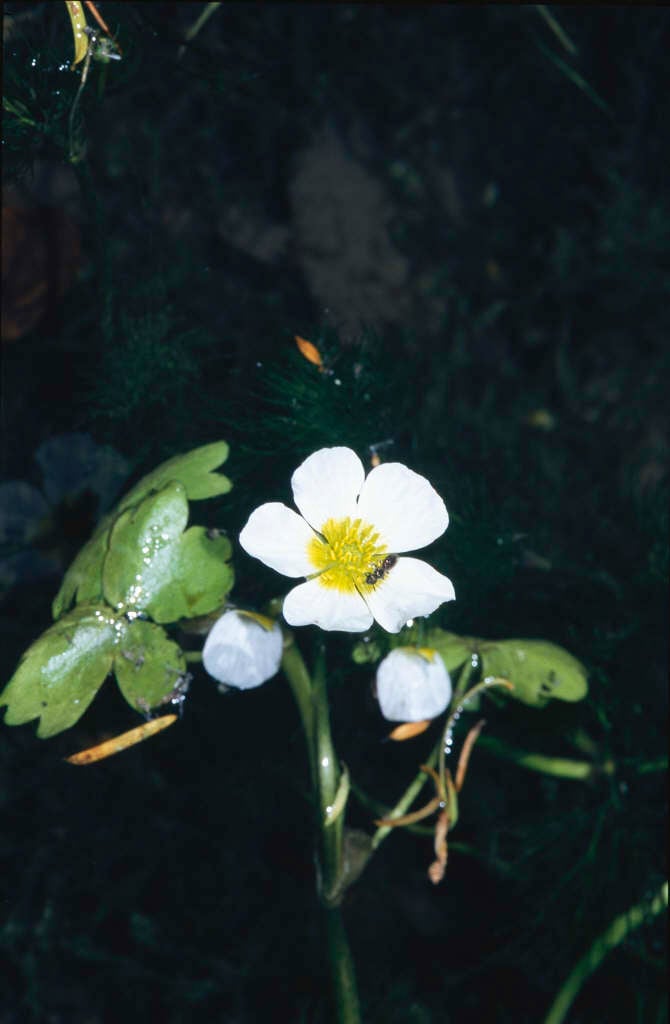Ranunculus aquatilis
common water crowfoot
A short-lived aquatic perennial with submerged, branched slender stems and leaves divided into thread-like segments, and palmately lobed, dark green floating leaves, with solitary white flowers 2cm across in summer

Buy this plant
Size
Ultimate height
Up to 10cmTime to ultimate height
1–2 yearsUltimate spread
0.1–0.5 metresGrowing conditions
Moisture
Poorly–drainedpH
Acid, Alkaline, NeutralColour & scent
| Stem | Flower | Foliage | Fruit | |
| Spring | Green | |||
|---|---|---|---|---|
| Summer | White | Green | ||
| Autumn | ||||
| Winter |
Position
- Full sun
Aspect
South–facing or West–facing
Exposure
Exposed or Sheltered Hardiness
H7Botanical details
- Family
- Ranunculaceae
- Native to GB / Ireland
- Yes
- Foliage
- Evergreen
- Habit
- Matforming, Submerged, Floating
- Potentially harmful
- Harmful if eaten, skin irritant. Wear gloves and other protective equipment when handling. Pets: Harmful if eaten, skin irritant - for further information and contact numbers regarding pets, see the HTA guide to potentially harmful plants
- Genus
Ranunculus can be annuals, biennials, evergreen or herbaceous perennials, with rhizomes, tubers or spreading by runners. The leaves are variable but often palmately lobed or dissected and the flowers usually bowl-shaped
- Name status
Correct
How to grow
Cultivation
Grow in muddy pool margins in water 15-60cm deep, in full sun. Will grow in slow or fast moving fresh water. See pond plants for further advice
Propagation
Propagate by seed sown as soon as ripe
Suggested planting locations and garden types
- Wildlife gardens
- Low Maintenance
Pruning
Cut back after flowering
Pests
Generally pest-free
Diseases
May be susceptible to powdery mildews, a rust and grey moulds
Love gardening
Sign up to receive regular gardening tips, inspiration, offers and more
View our Privacy Policy
Get involved
The Royal Horticultural Society is the UK’s leading gardening charity. We aim to enrich everyone’s life through plants, and make the UK a greener and more beautiful place.